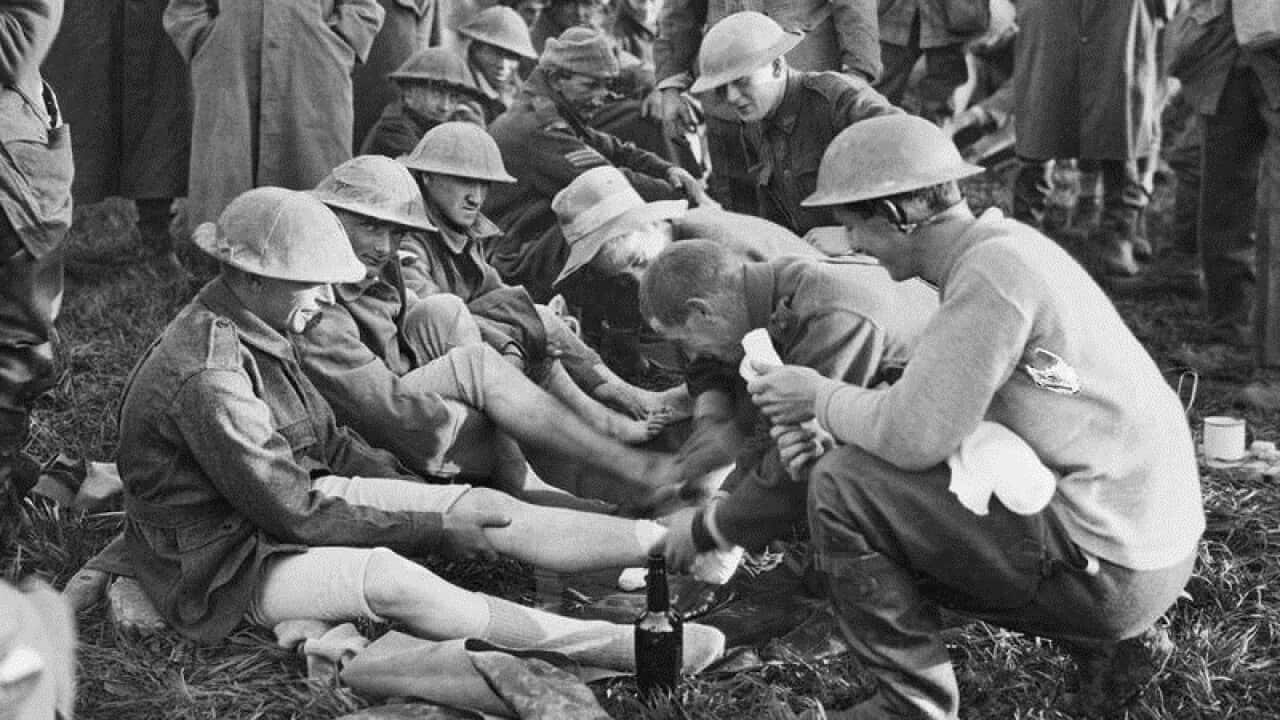Dismembered soldiers sucked into cesspools of mud. Shattered tree trunks and the waft of poison gas hovering over the wounded who were awaiting their fates on the scarred soil of Flanders Fields.
The Third Battle of Ypres, fought in western Belgium a century ago, was as bad as World War I would get.
Half a million soldiers were estimated to have been killed or wounded during the 100-day battle and one name keeps coming back: Passchendaele, now as grim a symbol as any field of war ever remembered.
Monday marks the centennial of the start of the Allied offensive, which ended up barely moving the front line. Thus it became a metaphor for the folly of war as soldiers from Australia, Canada and New Zealand joined mostly British forces attempting to break Germany's hold on the Western Front.
"It is the largest massacre ever to have taken place on Belgian soil," said curator Piet Chielens of the In Flanders Fields Museum, which has recorded over 150,000 dead - and still counting - in the months of fighting.
Belgium's King Philippe and Queen Mathilde are expected to join Britain's Prince Charles, Prince William and the Duchess of Cambridge over two days of centenary ceremonies, starting with a Last Post at Ypres' Menin Gate on Sunday.
When the Third Battle of Ypres started on July 31, 1917, World War I was entering its fourth year, bogged down in trench warfare.
Both sides were desperate for a breakthrough following the hundreds of thousands of casualties the year before at Verdun and the Somme in northern France, two other battles that vie with Passchendaele as the most costly of the Great War.
Britain's Douglas Haig was convinced he could force a breakthrough at Ypres, even though two earlier battles there had failed. The goal was to shut down German submarine operations on the Belgian coast. Haig's plan to take the village of Passchendaele in a few days and move on to the coast turned out to be wildly ambitious.
With rain turning the swampy terrain to mud and the Germans armed with mustard gas, it would take until November for the Allies to capture the village. They never got close to the ports of Zeebrugge and Ostend.
British painter Paul Nash was at Passchendaele in November and used the depth of despair he witnessed as inspiration for his painting The Menin Road.
"The rain drives on, the stinking mud becomes more evilly yellow, the shell holes fill up with green-white water, the roads and tracks are covered in inches of slime, the black dying trees ooze and sweat and the shells never cease," Nash wrote to his wife.
"Annihilating, maiming, maddening, they plunge into the grave which is this land."
In the end, the British would argue that even though the advance stalled, the long and costly battle weakened the German enemy. History, however, has highlighted the futility of the exercise, Chielens said, pointing out that Passchendaele could not be held once it was taken.
"Passchendaele was ultimately a small and indefensible salient," Chielens said.

